The Most Important Milestones in Black History You Need to Know About
Milestones in Black History
African American history dates back to the arrival of the first enslaved Africans in the 1600s. Over the centuries, African Americans have faced enslavement, discrimination, and segregation but have also made significant contributions to the country in areas such as the arts, culture, science, sports, and politics.
1619: Slavery Comes to North America
The first American slaves were black Africans who were brought to the English colonies in 1619 on a Dutch ship. The ship brought 20 enslaved Africans to the colony of Virginia. This marked the beginning of the transatlantic slave trade, which brought millions of enslaved Africans to America over the next two and a half centuries.
1793: Rise of the Cotton Industry
The rise of the cotton industry in the United States was fueled by the growth of the textile industry in Britain, the expansion of markets for cotton products, and technological innovations in cotton production, including the 1793 invention of the cotton gin. The cotton industry became one of the most important industries in the country in the late 1700s and early 1800s.
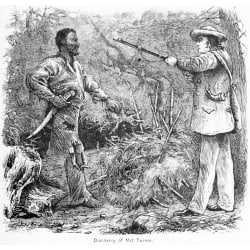
August 1831: Nat Turner’s Revolt
Nat Turner was an enslaved African American who had been born and raised on a Virginia plantation. On Aug. 21, 1831, Turner and a small group of followers launched a violent uprising, killing more than 50 white people. The rebellion was quickly put down by local militias, and Turner and his followers were captured, tried, and executed.
1831: Abolitionism and the Underground Railroad
The Underground Railroad was a network of safe houses that escaped slaves used to reach freedom in the late 1700s and early 1800s. The term “Underground Railroad” is a metaphor, as there were no actual tracks or trains involved. Instead, the network was made up of an assortment of abolitionists, free African Americans, and escaped slaves who worked together to help those escaping slavery reach freedom. The Underground Railroad was a vital part of the abolitionist movement, which worked to end slavery. One of the leading voices of abolitionism was William Lloyd Garrison, a Massachusetts journalist who founded a newspaper called The Liberator in 1831.
March 6, 1857: Dred Scott Case
Dred Scott was an enslaved man who was brought to free territory, then returned to Missouri, a slave state. Scott then sued for his freedom and the freedom of his wife and daughters, saying that since they had been brought to free soil, that made them legally free. The case, Scott v. Sanford, went all the way to the Supreme Court. The court ruled that Scott did not have the right to sue because African American people were not American citizens and therefore were not entitled to constitutional rights.
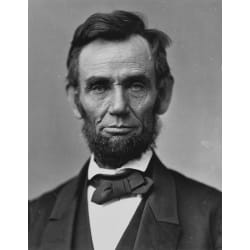
1861: Civil War and Emancipation
The Emancipation Proclamation was issued by President Abraham Lincoln during the Civil War, which began in 1861. The 1863 proclamation declared that all slaves in Confederate-held territory were to be set free. The Emancipation Proclamation did not free all slaves in the United States, but it did change the nature of the war and helped lay the foundation for the eventual abolition of slavery.
1865: The Post-Slavery South
The Reconstruction Era was the period following the Civil War in which the federal government attempted to rebuild the Southern United States. African Americans played a significant role, as they sought to secure their rights and freedoms as citizens. During this time, African Americans held political office, established schools and businesses, and worked to create a place for themselves as free people in American society. However, despite these advances, the era was marked by intense resistance from white Southerners, who sought to maintain their power and limit the rights of African Americans. This led to the implementation of discriminatory laws and policies known as Jim Crow laws, which lasted until the mid-1960s.
1896: “Separate but Equal”
“Separate but equal” was a legal doctrine established by the Supreme Court in the 1896 case Plessy v. Ferguson, which held that as long as separate facilities for white and black people were reasonably equal in quality, segregation was constitutional. This ruling upheld state-sponsored segregation and helped to establish the system of Jim Crow laws that lasted until this doctrine was eventually overturned by the Supreme Court in 1954.
1909: NAACP Founded
The National Association for the Advancement of Colored People (NAACP) was founded by a group of African American and white activists in response to increasing violence and discrimination against African Americans in the early 1900s. The NAACP’s purpose was to ensure political, educational, social, and economic equality and to eliminate race-based discrimination. Over the years, the NAACP has played a key role in some of the most important civil rights struggles in American history, including the fight against segregation, the push for voting rights, and the effort to end police brutality and mass incarceration.
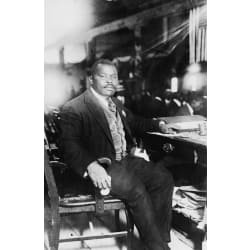
1916: Marcus Garvey and the UNIA
Black nationalist Marcus Garvey founded the Universal Negro Improvement Association (UNIA) in Jamaica in 1914, then brought his efforts to America in 1916. Garvey’s philosophy was centered around the idea of black self-reliance and the creation of a separate black nation.
1920: Harlem Renaissance
The Harlem Renaissance was a cultural movement that took place in the 1920s and 1930s in the Harlem neighborhood of New York City. During this time, African American artists, writers, musicians, and intellectuals came together to express a new form of black cultural identity. The Harlem Renaissance was a response to the systemic racism and inequality that African Americans faced, and it was a celebration of black history, culture, and pride. Some of the most notable figures of the Harlem Renaissance include writers Zora Neale Hurston and Langston Hughes, musician Duke Ellington, and artist Aaron Douglas.
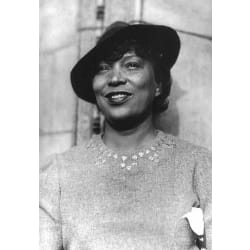
1941: African Americans in World War II
African American soldiers played a significant role in World War II, serving in both the European and Pacific theaters. Despite facing widespread racial discrimination and segregation in the military and in American society, African American soldiers fought bravely and made significant contributions to the war effort. In the early years of the war, African Americans were largely limited to support roles, but as the war progressed and manpower shortages grew, they were gradually integrated into combat units. By the end of the war, African American soldiers had proven their bravery, and their service helped to lay the groundwork for the eventual desegregation of the military. The experiences of African American soldiers in World War II helped to build momentum for the civil rights movement and the eventual end of Jim Crow laws in the United States.
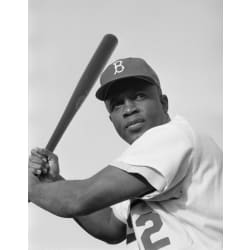
1947: Jackie Robinson
Jackie Robinson was an American professional baseball player best known for breaking the color barrier in Major League Baseball (MLB) in 1947, becoming the first African American player to play in the league in the modern era. Robinson’s signing by the Brooklyn Dodgers broke a longstanding unwritten rule that excluded African American players. He went on to have a successful decade-long career in the MLB, earning Rookie of the Year honors in 1947 and becoming a six-time All-Star.
May 17, 1954: Brown v. Board of Education
Brown v. Board of Education was a 1954 Supreme Court case in which the court ruled that segregation in public schools was unconstitutional. The court case was brought by a group of African American parents in Topeka, Kansas, who argued that their children were being denied equal educational opportunities because of the “separate but equal” doctrine, which allowed for segregation in public schools. In a unanimous decision, the Supreme Court declared that segregation in public schools violated the equal protection clause of the 14th Amendment to the Constitution.
August 1955: Emmett Till
Emmett Till was 14 years old when he was brutally murdered in Mississippi in 1955 after being accused of whistling at a white woman. His lynching was a catalyst for the civil rights movement and is considered one of the most notorious incidents of racial violence in American history.
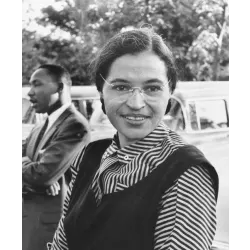
December 1955: Rosa Parks and the Montgomery Bus Boycott
On Dec. 1, 1955, Rosa Parks refused to give up her seat on a bus to a white person, leading to her arrest. A boycott of the Montgomery, Alabama, bus system followed. The boycott lasted for more than a year and resulted in the U.S. Supreme Court ruling that segregation on public buses was unconstitutional.
September 1957: Central High School Integrated
The Little Rock Nine was a group of African American students who enrolled at Central High School in Little Rock, Arkansas, in 1957. The enrollment of the students was met with resistance and violence from white segregationists, and the governor called in the Arkansas National Guard to prevent the students from entering the school. Ultimately, the federal government stepped in to end the standoff, sending in Army troops to guard the nine students.
1958: Loving v. Virginia
Mildred and Richard Loving were an interracial couple who were arrested and imprisoned in Virginia for violating the state’s Racial Integrity Act of 1924, which declared interracial marriages illegal. The Lovings challenged their conviction, and the case eventually reached the Supreme Court, which ruled in their favor in a unanimous decision. The ruling in Loving v. Virginia struck down anti-miscegenation laws in all states and paved the way for greater acceptance of interracial relationships and marriages.
1960: Sit-In Movement and Founding of SNCC
The Student Nonviolent Coordinating Committee was a civil rights organization formed in 1960 by students to support the civil rights movement. The group played a key role in organizing sit-ins, voter registration drives, and freedom rides to protest segregation and discrimination. SNCC was known for its commitment to nonviolence and its belief in the power of direct action to effect change.

May 1961: CORE and Freedom Rides
The freedom rides were a series of bus trips in the early 1960s organized to protest segregation in the American South. The protests involved African American and white activists riding on buses together to challenge the discriminatory practices that existed in the transportation industry. Many of these protests were organized by CORE, the Congress of Racial Equality.
September 1962: Integration of Ole Miss
The integration of the University of Mississippi, also known as Ole Miss, was a key event in the civil rights movement that took place in 1962. The situation came to a head when James Meredith, an African American student, attempted to enroll in the university. His arrival on campus was met with violent protests, with National Guard troops and federal marshals being called in to restore order and allow Meredith to enroll. The integration of Ole Miss was a significant moment in the struggle for desegregation and equal rights in the American South.
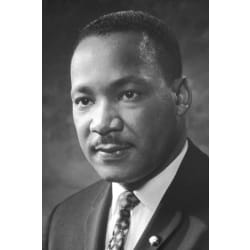
1963: “I Have a Dream”
Dr. Martin Luther King Jr. gave his famous “I Have a Dream” speech on Aug. 28, 1963, during the March on Washington for Jobs and Freedom. The speech is considered one of the defining moments of the civil rights movement and is widely regarded as one of the greatest speeches in American history. In the speech, Dr. King spoke about his vision of a future in which African Americans and all people were treated equally, regardless of their skin color. He called for an end to segregation and discrimination and called on Americans to live up to the principles of freedom and equality enshrined in the Declaration of Independence. The “I Have a Dream” speech is remembered for its powerful message of hope and its inspiring call to action.
June 1964: Freedom Summer and the “Mississippi Burning” Murders
The “Mississippi Burning” murders refer to the killings of three civil rights workers in Mississippi in 1964. The victims were James Chaney, a 21-year-old African American man, and Andrew Goodman and Michael Schwerner, two white men in their early 20s, who were working on a voter registration project in the state during the Freedom Summer of 1964. The three men were abducted and murdered by members of the Ku Klux Klan. The state would not arrest any of the culprits, so the federal government had to step in, indicting 18 men on civil rights charges. Only seven were convicted by an all-white jury.
July 1964: Civil Rights Act of 1964
The Civil Rights Act of 1964 was a landmark piece of legislation in the United States that outlawed discrimination based on race, color, religion, sex, or national origin. The act was signed into law by President Lyndon B. Johnson on July 2, 1964, and represented a major step forward in the struggle for civil rights and equality in the United States.
March 1965: Selma to Montgomery March
The Selma to Montgomery March was a voting rights demonstration in 1965 that took place in Alabama. The march was organized by civil rights leaders, including Dr. Martin Luther King Jr., to protest the discrimination and obstacles faced by African Americans trying to register to vote. On March 7, 1965, more than 600 marchers set out from Selma, Alabama, on a 50-mile journey to the state capital, Montgomery. The march was met with violence by state troopers, and the event, known as “Bloody Sunday,” received widespread media coverage.
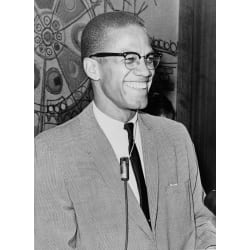
February 1965: Malcolm X Shot to Death
Malcolm X was a controversial and influential figure in the civil rights movement, known for his views on black nationalism, racial pride, and separation from white society. Once a leader of the Nation of Islam, he left the organization in 1964. On Feb. 21, 1965, while giving a speech at the Audubon Ballroom in Harlem, he was assassinated by members of the Nation of Islam.
August 1965: Voting Rights Act of 1965
The Voting Rights Act of 1965 was a federal law that prohibited discriminatory voting practices and ensured the right to vote for African Americans and other minorities. The act was passed in response to widespread voting discrimination in the American South, including literacy tests and other barriers that were used to prevent African Americans from exercising their right to vote.
Late 1960s: Rise of Black Power
The Black Power movement emerged in the 1960s as a response to the slow progress of the civil rights movement. The Black Power movement advocated for a more radical and assertive form of activism, focused on black pride, self-reliance, and community control. Black Power activists sought to challenge the systemic racism and economic inequality that African Americans faced and to empower black communities through cultural, political, and economic means.
April 1968: Fair Housing Act
The Fair Housing Act of 1968 is a federal law that prohibits discrimination in the sale, rental, and financing of housing based on race, color, religion, national origin, sex, familial status, or disability. The act was signed into law by President Lyndon B. Johnson on April 11, 1968.
April 4, 1968: MLK Assassinated
Dr. Martin Luther King Jr. was assassinated on April 4, 1968, in Memphis, Tennessee. He was shot and killed by James Earl Ray while standing on the balcony of the Lorraine Motel.
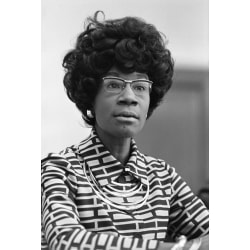
1972: Shirley Chisholm Runs for President
Congresswoman Shirley Chisholm, the first African American woman elected to Congress, was also the first to run for president of the United States. She ran in 1972 as a candidate for the Democratic Party, and her campaign was a historic moment in American politics.
1978: The Bakke Decision and Affirmative Action
In 1978, a landmark Supreme Court case dealt with affirmative action in higher education. The case, Regents of the University of California v. Bakke, involved Allan Bakke, a white man who was denied admission to the University of California medical school despite having higher qualifications than some non-white students who were admitted under the school’s affirmative action program. The court ruled that racial quotas were unfair and ordered that Bakke be admitted, but it also said that colleges could consider race when choosing applicants in order to ensure a diverse student body.
1984: Jesse Jackson Galvanizes Black Voters
Jesse Jackson ran for president of the United States in 1984 as a candidate for the Democratic Party. He was the first African American to mount a nationwide campaign for the presidency, and he won several primaries and caucuses, becoming a major force in the Democratic primaries.

1986: Oprah Winfrey Launches Syndicated Talk Show
Oprah Winfrey launched her syndicated talk show, “The Oprah Winfrey Show,” in 1986. The show was a huge success, becoming the highest-rated talk show in the country and making Winfrey one of the most influential figures in American media.
1992: Los Angeles Riots
The Los Angeles Riots were a series of violent uprisings that took place in Los Angeles, California, in 1992. The riots began on April 29, 1992, after a jury acquitted four Los Angeles Police Department officers who had been captured on video brutally beating an unarmed African American man, Rodney King. The acquittal sparked widespread anger and frustration in the city’s black community, and the riots lasted for six days, resulting in widespread destruction.
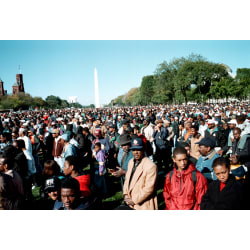
1995: Million Man March
The Million Man March was a large gathering of African American men that took place on Oct. 16, 1995, in Washington, D.C. The march was organized by Nation of Islam leader Louis Farrakhan and aimed to promote unity and solidarity among African American men.
2001: Colin Powell Becomes Secretary of State
Colin Powell became the first African American secretary of State of the United States in 2001. He was appointed by President George W. Bush and served in that role from Jan. 20, 2001, to Jan. 26, 2005.
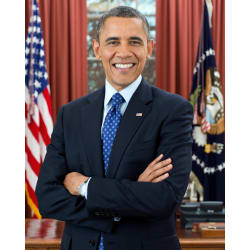
2008: Barack Obama Becomes 44th U.S. President
Barack Obama became the 44th president of the United States on Jan. 20, 2008. He was the first African American to be elected to the presidency, and his election marked a significant moment in American history.
2013: The Black Lives Matter Movement
Black Lives Matter (BLM) is a decentralized political and social movement that was founded in 2013 in response to the acquittal of George Zimmerman in the shooting death of Trayvon Martin, an African American teenager. The movement seeks to end systemic racism and violence against black people, and it has become one of the largest social justice movements in the United States.
2020: George Floyd Protests
The George Floyd protests were a series of nationwide demonstrations that took place in the United States in the aftermath of the murder of George Floyd, a black man, by Minneapolis police officers on May 25, 2020.
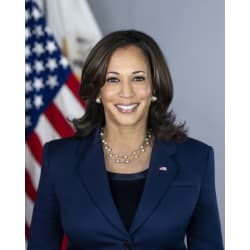
2021: Kamala Harris Becomes the First Female and First Black U.S. Vice President
Kamala Harris became the first woman and first black person to be elected vice president of the United States in 2021. She was elected as the vice president on Nov. 7, 2020, alongside President Joe Biden, and she was sworn in on Jan. 20, 2021.
Additional Reading on Black History
- America’s History of Slavery Began Long Before Jamestown
- Nat Turner’s Rebellion
- What is the Underground Railroad?
- Missouri’s Dred Scott Case, 1846-57
- Black Soldiers in the U.S. Military During the Civil War
- Separate but Equal: Plessy v. Ferguson
- Booker T. Washington
- NAACP History
- Marcus Garvey and the Universal Negro Improvement Association
- Doctoral Programs at Historically Black Colleges
- A New African American Identity: The Harlem Renaissance
- African Americans in World War II
- Lynching in America: Confronting the Legacy of Racial Terror
- Emmett Till
- Civil Rights Movement
- Malcolm X
- Martin Luther King Jr.
- Oprah Winfrey
- The Million Man March
- President Barack Obama
- The Black Lives Matter Movement
Photo Attribution:
Nat Turner: By William Henry Shelton (1840–1932)[1][4] - Image was found on Encyclopedia Virginia. The print is in the Bettman Archive.[1] The image has been printed on p. 321 of 1882's A Popular History of the United States,[2] and p. 154 of 1894's History of the United States from the Earliest Discovery of America to the Present Day.[3], Public Domain.
Abraham Lincoln: By Alexander Gardner - museums.fivecolleges.edu, Public Domain.
Marcus Garvey: By from George Grantham Bain Collection - This image is available from the United States Library of Congress's Prints and Photographs divisionunder the digital ID cph.3a03567.This tag does not indicate the copyright status of the attached work. A normal copyright tag is still required. See Commons:Licensing for more information., Public Domain.
Zora Neale Hursto: By Unknown author - This image is available from the United States Library of Congress's Prints and Photographs divisionunder the digital ID cph.3b10040.This tag does not indicate the copyright status of the attached work. A normal copyright tag is still required. See Commons:Licensing for more information., Public Domain.
Jackie Robinson: By Photo by Bob Sandberg, Look photographerRestoration by Adam Cuerden - This image is available from the United States Library of Congress's Prints and Photographs divisionunder the digital ID ppmsc.00048.This tag does not indicate the copyright status of the attached work. A normal copyright tag is still required. See Commons:Licensing for more information., Public Domain.
Rosa Parks: By Unknown author - USIA / National Archives and Records Administration Records of the U.S. Information Agency Record Group 306, Public Domain.
Freedom Riders: By Adam Jones from Kelowna, BC, Canada - Exhibit on Freedom Riders - Center for Civil and Human Rights - Atlanta - Georgia - USA, CC BY-SA 2.0.
Martin Luther King, Jr.: By Nobel Foundation - Description page (direct link), Public Domain
Malcom X: By Ed Ford, World Telegram staff photographer - Library of Congress. New York World-Telegram & Sun Collection. http://hdl.loc.gov/loc.pnp/cph.3c15058, Public Domain.
Shirley Chisholm: By Thomas J. O'Halloran, U.S. News & World Reports. Light restoration by Adam Cuerden - This image is available from the United States Library of Congress's Prints and Photographs divisionunder the digital ID ds.07135.This tag does not indicate the copyright status of the attached work. A normal copyright tag is still required. See Commons:Licensing for more information., Public Domain.
Oprah Winfrey: By https://www.flickr.com/photos/aphrodite-in-nyc - https://www.flickr.com/photos/aphrodite-in-nyc/15445694840, CC BY 2.0.
Million Man March: By Yoke Mc / Joacim Osterstam - flickr.com, CC BY 2.0.
Barack Obama: By Official White House Photo by Pete Souza - P120612PS-0463 (direct link)https://web.archive.org/web/20160227060205/https://www.whitehouse.gov/administration/president-obama (Official White House page - direct link), Public Domain.
Kamala Harris: By Lawrence Jackson - https://www.whitehouse.gov/administration/vice-president-harris/ (direct download), Public Domain.